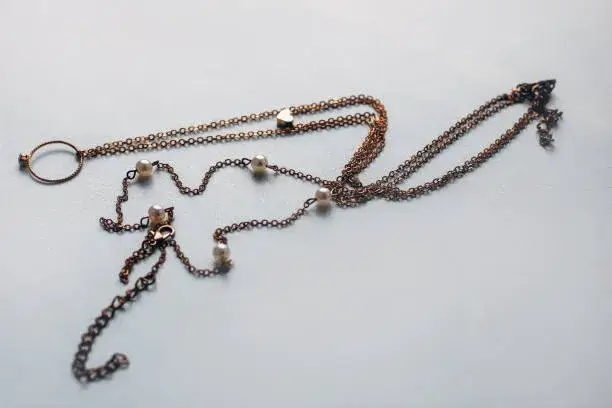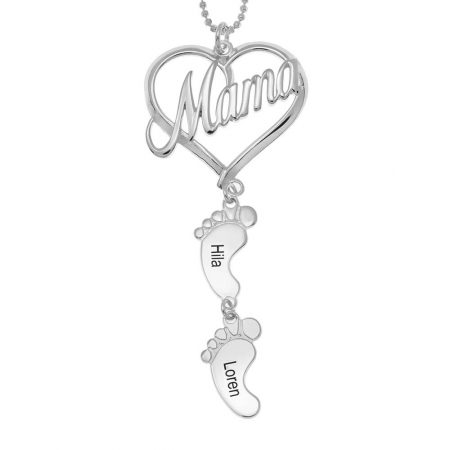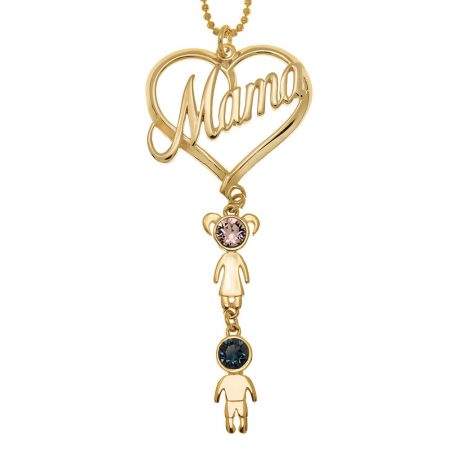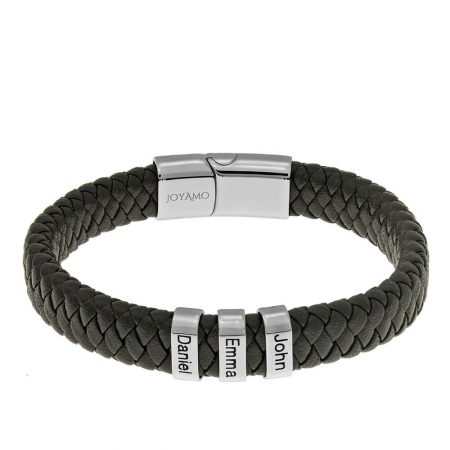Discover why certain jewelry tarnishes skin and how to prevent it.
Explore the chemical reactions between metals and skin acids, factors influencing discoloration, and misconceptions.
Learn about hypoallergenic materials and proper care to enjoy your favorite pieces without worry.
I. Why Jewelry Turns Your Skin Green?
Have you ever worn specific jewelry and then observed your skin turning green?
Jewelry enthusiasts are frequently confused and worried about the underlying causes of this frequent occurrence.
Anyone who adorns themselves with jewelry must understand why some jewelry causes the skin to turn green.
The main cause of the condition is a chemical reaction that occurs between the acids in your skin and the metals in the jewelry.
Copper, brass, and alloys containing nickel are among the metals that are commonly known to cause this distention.
But it’s not just the metals that cause this; your skin’s pH, moisture content, and extended wear all contribute to a stronger reaction.
This text aims to unravel the mysteries behind why jewelry turns skin green, debunk misconceptions, and provide practical solutions for preventing and addressing this issue.
Throughout the blog, we’ll explore why a certain type of jewelry turns your skin green offering insights and guidance to help you enjoy your favorite necklace pieces, rings bracelets, or earrings without any unwanted side effects.

II. Exploring the Reasons Behind Skin Discoloration from Jewelry
The greenish hue left on your skin by jewelry isn’t a surface mark; it’s the outcome of a complex interaction, between metals and your skin.
When metals like copper, brass, or nickel interact with the acids in your skin they undergo oxidation.
This process leads to the formation of compounds like copper chloride or copper carbonate resulting in the tint on your skin.
Several factors impact how intense this reaction is.
The composition of the metal plays a role as alloys with amounts of reactive metals are more likely to cause skin discoloration.
Moreover, factors such as the acidity level of your skin exposure to moisture, and prolonged contact with the metal can all contribute to intensifying this reaction.
Contrary to belief, it’s not always about the metal quality that determines its tendency to cause skin discoloration.
Even high-quality sterling silver jewelry can trigger this reaction due, to its copper content.
Understanding these intricacies helps debunk misconceptions surrounding skin reactions and empowers jewelry enthusiasts to make choices and take proactive steps to reduce skin discoloration while wearing their favorite accessories.
Metal types commonly found in jewelry and their likelihood of causing skin discoloration
| Metal Type | Likelihood of Turning Skin Green | Commonly Found In |
|---|---|---|
| Sterling Silver | Moderate | Rings, Necklaces, Earrings |
| Copper | High | Bracelets, Rings, Earrings |
| Brass | High | Necklaces, Bangles, Rings |
| Nickel Alloys | High | Costume Jewelry, Piercings |
| Stainless Steel | Low to Moderate | Watches, Bracelets, Rings |
III. Understanding the Green Skin Phenomenon
When your skin takes on a hue due to wearing jewelry it’s often a result of an interaction between the metal in the jewelry and the natural acids on your skin.
This chemical process leads to the creation of substances like copper chloride which is what causes the tint on your skin.
Although seeing your skin turn green may seem concerning it’s usually more of an issue than a health problem.
If you start feeling any discomfort, itching, or irritation in addition to the discoloration it could suggest a reaction to certain metals like nickel.
It’s important to distinguish between nonallergic reactions.
Allergic reactions typically come with symptoms beyond changes in skin color, such as redness, swelling, and itching.
On the other hand, nonallergic reactions are mainly characterized by discoloration alone.
To prevent skin discoloration maintaining hygiene practices and taking care of both your skin and jewelry are essential.
Regularly cleaning your jewelry to get rid of accumulated residues and avoiding wearing jewelry for periods, in damp conditions can help.
By giving importance to hygiene and being mindful of reactions you can continue enjoying your favorite accessories without worrying about developing green-colored skin.
✏ Understanding Green Skin Reaction
- Cause: Chemical reaction between metal in jewelry and skin’s acids.
- Manifestation: Green discoloration on the skin due to the formation of compounds like copper chloride.
✏ Health Concerns
- Harmlessness: Green skin reaction is typically cosmetic, not harmful to health.
- Allergic Reactions: Watch for symptoms like itching, swelling, and redness, indicating allergy.
✏ Recognizing Allergic vs. Non-Allergic Reactions
- Allergic: Symptoms extend beyond skin discoloration to include itching and swelling.
- Non-Allergic: Limited to green discoloration without accompanying symptoms.
✏ Preventive Measures
- Hygiene: Regular cleaning of jewelry and skin to remove residues.
- Avoid Prolonged Wear: Especially in humid conditions to reduce the risk of skin reaction.
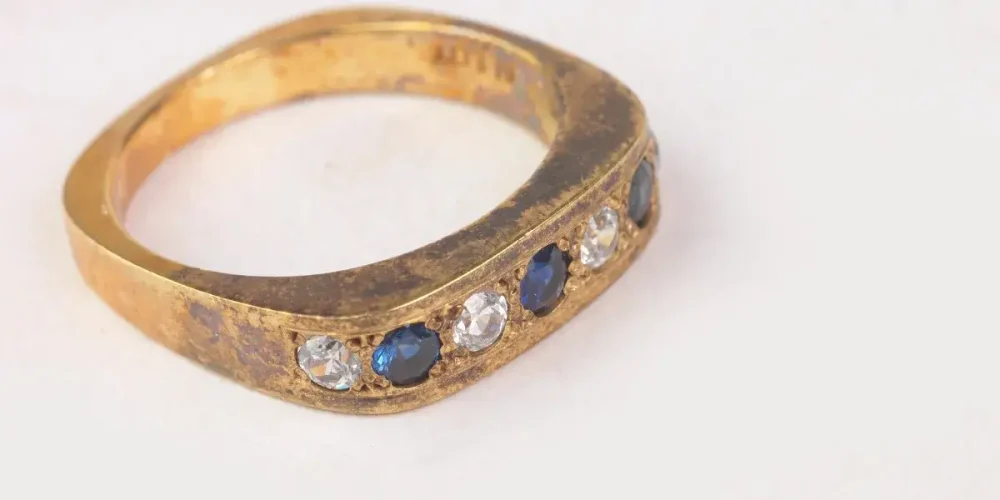
IV. Preventing Skin Discoloration from Jewelry
To avoid the unsightly green skin reaction caused by certain jewelry, consider these proactive measures:
📌 Minimize Risk Factors
- Limit exposure to moisture and acids by removing jewelry before swimming or applying lotions.
- Avoid wearing jewelry for extended periods, especially in hot and humid conditions.
📌 Choose Hypoallergenic Materials
- Opt for jewelry made from hypoallergenic metals like titanium, stainless steel, or platinum.
- Look for pieces labeled as nickel-free to reduce the risk of allergic reactions.
📌 Utilize Protective Coatings
- Consider jewelry with protective coatings like rhodium plating to create a barrier between your skin and reactive metals.
- Invest in quality pieces with tarnish-resistant finishes to prolong their lifespan and prevent skin irritation.
📌 Practice Proper Care and Maintenance
- Regularly clean your jewelry with mild soap and water to remove dirt and oils that can contribute to skin discoloration.
- Store your jewelry in a dry, cool place away from direct sunlight to prevent tarnishing and maintain its appearance.
If you implement these preventive measures and select jewelry thoughtfully, you will be able to enjoy your favorite accessories without worrying about skin discoloration or irritation.
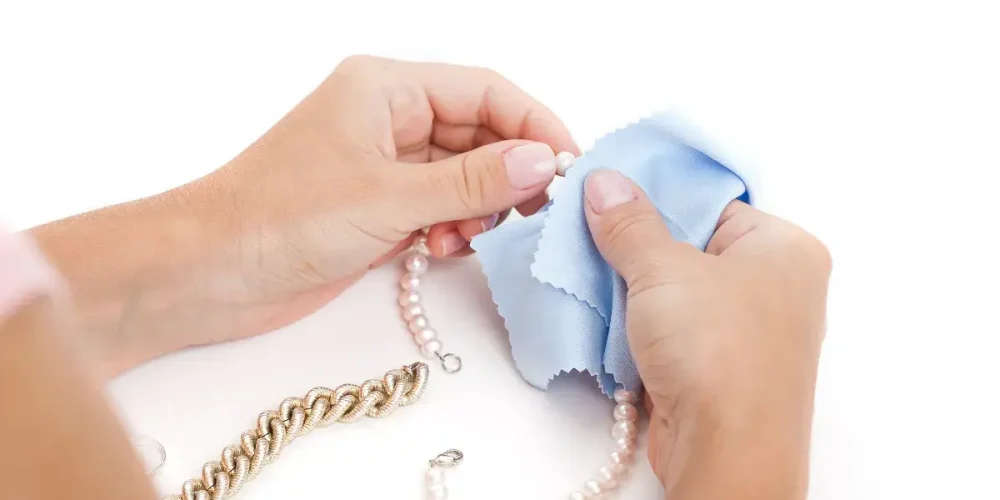
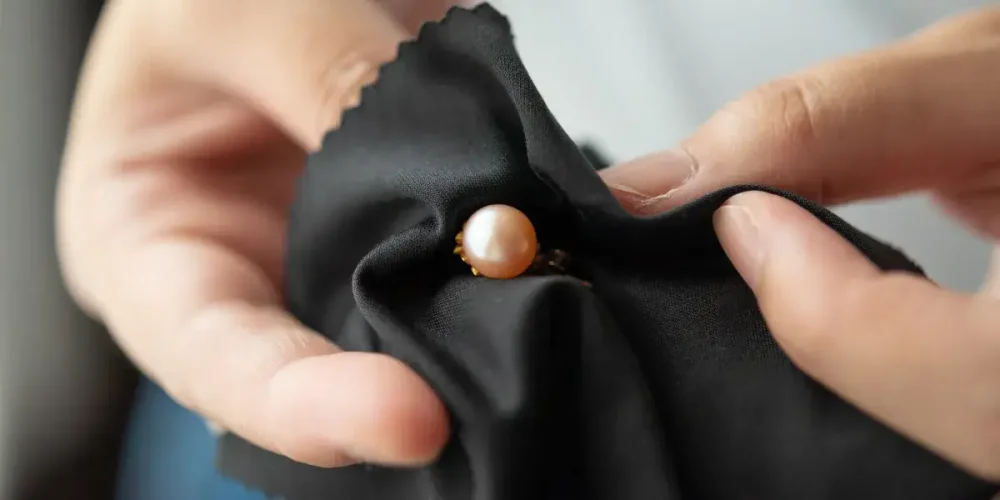
V. Solutions for Green Skin Reaction
There is no need to become alarmed when jewelry causes your skin to become green!
The following are some practical ways to deal with and avoid this frequent problem:
📌 Remedies for Soothing Irritated Skin
- To relieve any irritation or dryness brought on by the reaction, apply a light moisturizer or calming lotion to the afflicted region.
- Aloe vera gel can also lessen redness and irritation by moisturizing and soothing injured skin.
📌 Cleaning Green Stains from Skin
- To get rid of any last traces of metal salts that might have gotten on your skin, gently wash the affected area with a little soap and water.
- Try employing a solution of baking soda and water as a mild exfoliator to remove discoloration from tough spots.
📌 Seeking Medical Advice
- It’s crucial to see a dermatologist for a professional examination and treatment if you suffer from severe or persistent skin reactions, such as blistering, redness, or swelling.
- To reduce symptoms and stop more responses, they can suggest suitable skin care items or prescription drugs.
📌 Alternatives for Metal Allergies
- Consider switching to jewelry made from hypoallergenic materials like titanium, stainless steel, or platinum, which are less likely to cause allergic reactions.
- Another option is to explore non-metal jewelry alternatives such as ceramic, wood, or silicone, providing stylish options for individuals with metal sensitivities.
If you follow our advice, you will be able to effectively manage green skin reactions from jewelry, having a comfortable and enjoyable wearing experience while minimizing the risk of irritation and allergic reactions.
VI. Specific Concerns like “Green Neck”
When it comes to jewelry-related skin discoloration, certain concerns stand out. Here’s how to address them effectively:
📌 Explaining “Green Neck” Phenomenon
- Chain necklaces are a common source of the “green neck” phenomenon, especially ones composed of metals like brass or copper. Green stains are the result of these metals reacting with sweat and skin oils. Selecting hypoallergenic materials or jewelry with protective coatings can help lessen this problem.
📌 Common Scenarios of Skin Discoloration
- Several factors can lead to skin discoloration, including the use of inexpensive or shoddy jewelry that contains reactive metals like nickel. Prolonged exposure to dampness or acidic chemicals, along with friction between the skin and jewelry, are other concerns to consider. People who are aware of these possibilities may be able to take preventative action.
📌 Tailoring Jewelry Choices to Personal Sensitivities
- Stainless steel, titanium, or sterling silver are examples of hypoallergenic materials that are ideal for those with sensitive skin. Irritation can also be decreased by avoiding tight-fitting jewelry and choosing jewelry with smooth edges. Wearing jewelry that is tailored to individual tastes and skin sensitivity levels guarantees comfort and style.
| Concern | Explanation |
|---|---|
| “Green Neck” Phenomenon | Sweat and oils react with metals like copper or brass in chain necklaces, causing green stains. Opt for coatings or hypoallergenic materials to prevent this issue. |
| Common Scenarios of Skin Discoloration | Cheap or poorly-made jewelry containing reactive metals like nickel, prolonged exposure to moisture or acids, and friction between skin and jewelry can cause discoloration. |
| Tailoring Jewelry Choices | Choose hypoallergenic materials such as stainless steel or titanium and opt for smooth edges to reduce irritation. Customize jewelry based on personal sensitivities. |
VII. Best DIY Ways to Remove Tarnish from Jewelry at Home
Worry not! Tarnished jewelry can still be beautiful and sparkling!
You can bring your favorite items back to life with a few everyday products and a little bit of elbow grease.
The following are a few of the top do-it-yourself techniques for polishing jewelry:
✔ Baking Soda Paste
- Create a paste by mixing baking soda with water until it forms a thick consistency.
- Gently rub the paste onto the tarnished areas of your jewelry using a soft cloth or toothbrush.
- Rinse thoroughly with water and buff dry with a clean cloth.
✔ Aluminum Foil and Baking Soda Bath
- Line a bowl with aluminum foil, shiny side up.
- Place your tarnished jewelry on top of the foil.
- Sprinkle baking soda over the jewelry, ensuring each piece is covered.
- Pour boiling water over the jewelry and let it soak for a few minutes.
- Remove the jewelry, rinse with water, and dry thoroughly.
✔ Vinegar and Baking Soda Soak
- Create a solution by mixing equal parts white vinegar and water in a bowl.
- Add a tablespoon of baking soda to the solution and stir until dissolved.
- Submerge your tarnished jewelry in the solution and let it soak for 2-3 hours.
- Remove the jewelry, rinse with water, and dry completely.
✔ Toothpaste Polish
- Apply a small amount of non-gel toothpaste to a soft-bristled toothbrush.
- Gently scrub the tarnished areas of your jewelry.
- Rinse with water and dry thoroughly with a clean cloth.
✔ Lemon Juice and Salt Scrub
- Create a paste by mixing lemon juice with salt until it forms a thick consistency.
- Use a soft cloth or toothbrush to apply the paste to the tarnished areas of your jewelry.
- Rinse with water and dry thoroughly.
You may efficiently remove tarnish from your jewelry and appreciate its brightness once more with these do-it-yourself techniques, all from the comfort of your own home!
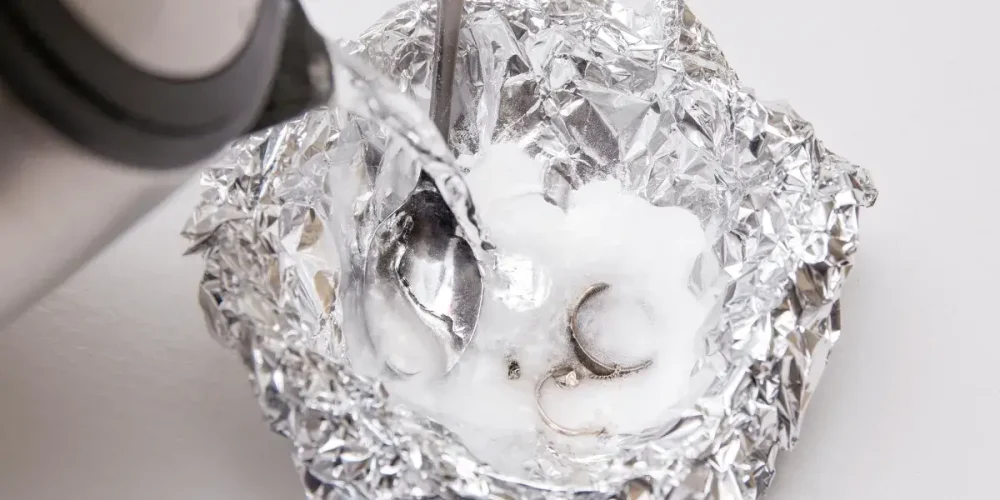
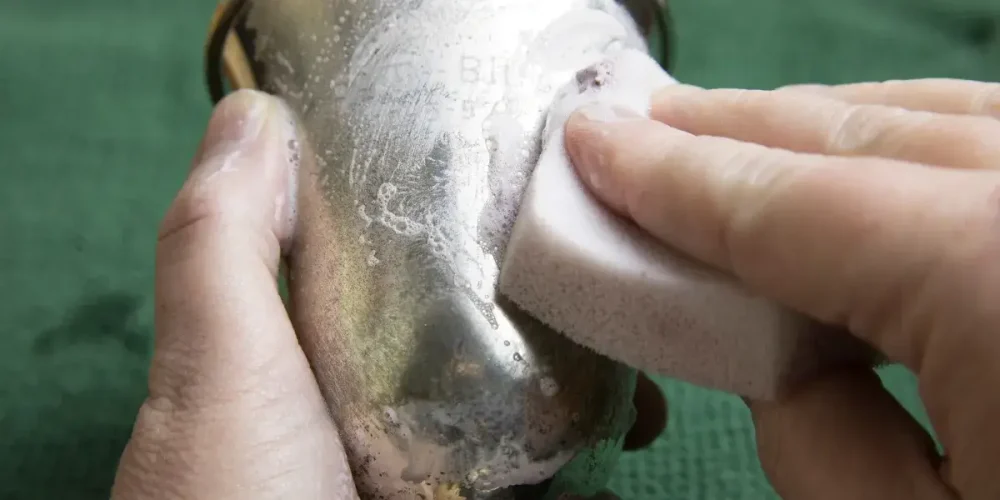

💡 What Jewelry turns skin green? FAQs
👉🏻 What jewelry does not turn skin green?
Stainless steel, titanium, platinum, and jewelry with a 14k or higher gold content are examples of hypoallergenic materials that rarely cause skin irritation. These metals are less reactive and unlikely to irritate or discolor the skin.
👉🏻 What jewellery turns your skin green?
Because of a chemical reaction between the metal and the acids in your skin, jewelry composed of metals like copper, brass, or alloys containing nickel can cause your skin to turn green. Your skin turns green as a result of this process, which creates substances like copper chloride.
👉🏻 Does real sterling silver turn green?
Genuine sterling silver usually does not become skin green, however it may tarnish over time and appear darker. However, some people may get green skin discoloration if the sterling silver jewelry has a high concentration of copper or other reactive metals.
👉🏻 Will 14k white gold turn skin green?
Comparing 14k white gold to lesser karat gold or gold-plated jewelry, the latter is more likely to cause skin to turn green. However, because nickel or other alloy metals were utilized in the alloy composition, some people may still experience skin discoloration from 14k white gold. Selecting hypoallergenic metals like platinum or better-quality white gold will help reduce the chance of skin discomfort.
👉🏻 What to do if a chain turns your neck green?
Should a chain give you a green neck, take off your jewelry right away and wash your skin with gentle soap and water. To ease any inflammation, apply a calming lotion. To avoid more responses, think about applying a transparent nail polish covering to the chain or choosing hypoallergenic materials like sterling silver or stainless steel.
👉🏻 Is green neck from jewelry bad?
Although green necks from jewelry are normally harmless, they can indicate a chemical reaction between the metal in the chain and the acids in your skin. Consult a doctor if irritation or discomfort is present. By taking preventive steps, such as selecting hypoallergenic materials, this problem can be lessened.
👉🏻 What does it mean when your neck turns green?
Wearing jewelry that causes your neck to become green usually means that metal alloys are reacting with the natural acids in your skin. The green discoloration is caused by chemicals formed by this reaction, such as copper chloride. A dermatologist should be seen if irritation or discomfort persists, even if it is typically cosmetic.
👉🏻 What kind of chain won’t turn your neck green?
Skin darkening is less common with hypoallergenic metal chains such as titanium, platinum, or stainless steel. Choose jewelry that is marked “nickel-free” to reduce the possibility of allergic reactions. Selecting premium materials with a 14k or higher gold content will also lessen the chance of tarnishing and skin discomfort.
 SHIPPING
SHIPPING
